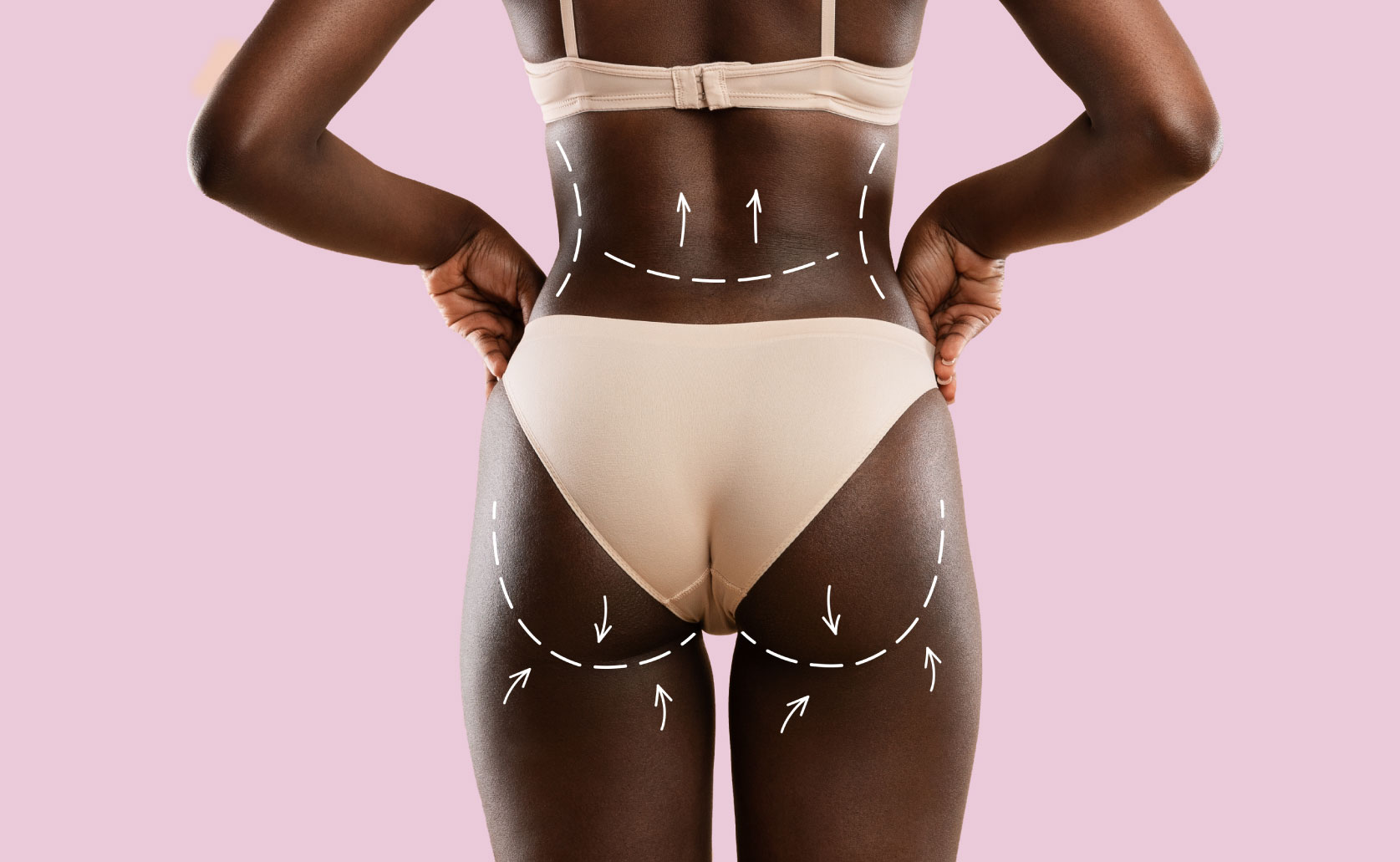
No two procedures age exactly the same. Butt lift outcomes vary widely between individuals. The type of surgery performed is one key factor. Fat grafting, implants, or lifting techniques each age differently. Lifestyle, genetics, and postoperative care also affect the outcome. Some patients maintain shape longer due to muscle tone. Others experience faster changes from weight fluctuation. Understanding variability is part of setting realistic expectations. Most surgeons give average timelines, but outcomes still differ. The answer is not the same for everyone.
Fat grafting retention determines how long shape improvements remain visible
Brazilian butt lift uses your own fat for volume. Not all fat survives after transfer. On average, 60 to 80 percent of fat survives. The rest is absorbed in the first few months. The fat that remains behaves like normal body fat. It can shrink with weight loss and expand with gain. If weight remains stable, the result holds longer. Sudden weight changes reduce symmetry and roundness. The body’s reaction during healing plays a key role. Early care affects long-term retention and contour.
Implant-based lifts provide volume but have a different aging timeline
Buttock implants do not shrink with weight loss like fat does. They maintain volume regardless of diet. However, implants are subject to shifting, encapsulation, or wear over time. Most silicone implants last 10 to 15 years with proper placement. Over time, changes in surrounding tissue may alter shape. Some people require revision for cosmetic or medical reasons. Implants can feel firmer or less natural than fat-based lifts. They provide more predictable volume but less flexibility. Long-term satisfaction depends on anatomy and activity level.
Results stabilize after the first six months post-surgery
The first months after surgery show rapid changes. Swelling reduces, and fat settles or reabsorbs. Patients notice shape fluctuations during healing. After six months, the outcome begins to stabilize. Volume and contour become more predictable. Scar tissue also matures, improving firmness. This period reflects the body’s final adaptation to surgery. Patients usually return to full activity by this point. Maintenance becomes the focus after initial recovery ends. That includes exercise, skin care, and weight stability.
Significant weight loss after surgery may alter shape and volume
Fat cells respond to metabolic changes. Even transferred fat behaves like native tissue. Losing weight after a Brazilian butt lift reduces volume. Fat shrinks uniformly, causing deflation or asymmetry. Implant-based procedures show less volume change with dieting. Still, tissue around implants may loosen or droop. Skin elasticity determines how well results endure weight fluctuation. Patients planning to lose weight are often advised to wait. Long-term results benefit from stable weight before and after surgery. Repeated weight shifts increase the risk of shape distortion.
Aging affects surgical results, especially in procedures using the patient’s fat
With age, collagen and elastin production declines. Skin loses tightness and resilience. The same aging process affects the buttocks after surgery. Gravity influences tissue positioning over time. Even successful fat grafts soften or drop with age. Implants shift slightly as tissue tone weakens. The initial lift settles, especially if muscle tone drops. Active patients may preserve shape longer through glute training. Aging is unavoidable but can be managed with maintenance. Genetics also play a role in tissue longevity.
Postoperative activity restrictions shape long-term outcomes
Recovery care influences final results more than many expect. Sitting is limited during the early weeks. Pressure on grafted fat reduces survival rates. Patients use special cushions or avoid sitting altogether. Movement restrictions help prevent fat displacement. Ignoring these rules leads to uneven absorption. Implants also require healing before full weight-bearing. Early exercise or strain can trigger complications. Following instructions extends result longevity. Healing routines directly affect what remains months later.
Smoking and alcohol can impair long-term surgical success
Smoking restricts blood flow, which is vital for graft survival. Poor circulation leads to increased fat loss. Alcohol dehydrates tissue and slows collagen rebuilding. Together, these habits reduce surgical durability. Non-smokers typically retain more fat from a BBL. They also experience fewer wound healing problems. Continued smoking may worsen scarring or delay tissue recovery. Alcohol affects hormone levels that influence fat storage. Lifestyle habits should match surgical investment. Recovery isn’t just about rest—it’s about biology.
Exercise can help maintain results but won’t fix declining contour
Fitness routines support muscle tone and skin health. Glute workouts add firmness beneath grafted fat. Cardio maintains healthy circulation and body composition. Still, exercise doesn’t replace surgical structure. Lost fat won’t regenerate through workouts. Implant shifting won’t reverse with muscle gains. Targeted fitness maintains overall aesthetics but has limits. Patients expecting to “train back” volume may be disappointed. Combining surgery with regular movement improves general satisfaction. Maintenance is a partnership, not a replacement strategy.
Visible changes may appear between 3 and 10 years after surgery
Butt lift results don’t last forever, even when performed perfectly. Some patients notice changes within three years. Others maintain shape for a decade or more. Environmental factors and metabolism determine breakdown speed. Lifestyle plays a bigger role than initial technique. Skin laxity, muscle tone, and fat redistribution all affect contour. Results often fade slowly, not suddenly. Minor changes accumulate until revision becomes a consideration. This timeline varies with age, weight, and genetics.
Revision surgery is common but not always necessary
Over time, some patients seek adjustments to their original results. Revision is not always about dissatisfaction. Sometimes it’s about aging or shifting expectations. Volume loss, asymmetry, or implant wear may prompt evaluation. Other times, trends or body goals simply evolve. Not every change warrants surgical correction. Many patients live with minor shifts comfortably. Surgeons evaluate whether revision brings actual benefit. Secondary procedures carry different risks than first-time lifts. Expectations and goals should be reestablished clearly before proceeding.
Long-term maintenance may involve non-surgical treatments
Some patients opt for laser skin tightening or radiofrequency sessions after several years. These treatments support collagen rebuilding and reduce skin laxity. They can complement surgical results but don’t restore volume. Other patients explore injectable options for subtle reshaping. These fillers are temporary and generally used for touch-ups. Ultrasound or microneedling may also support tone. Non-surgical tools offer options without downtime. However, their effects are mild and often require repetition. They work best when used early, not after major regression.
Surgery doesn’t stop the body from changing over time
Buttock shape is affected by hormones, weight, and age. Surgery sets a baseline, not a permanent mold. Over time, changes happen regardless of the initial outcome. Fat may migrate, soften, or shrink. Implants may shift as tissue support weakens. Hormonal shifts, especially in women, can alter lower body shape. Pregnancy, menopause, or medications all contribute to remodeling. Results should be monitored yearly through photos and consultation. Maintenance is a moving target, not a fixed result.
